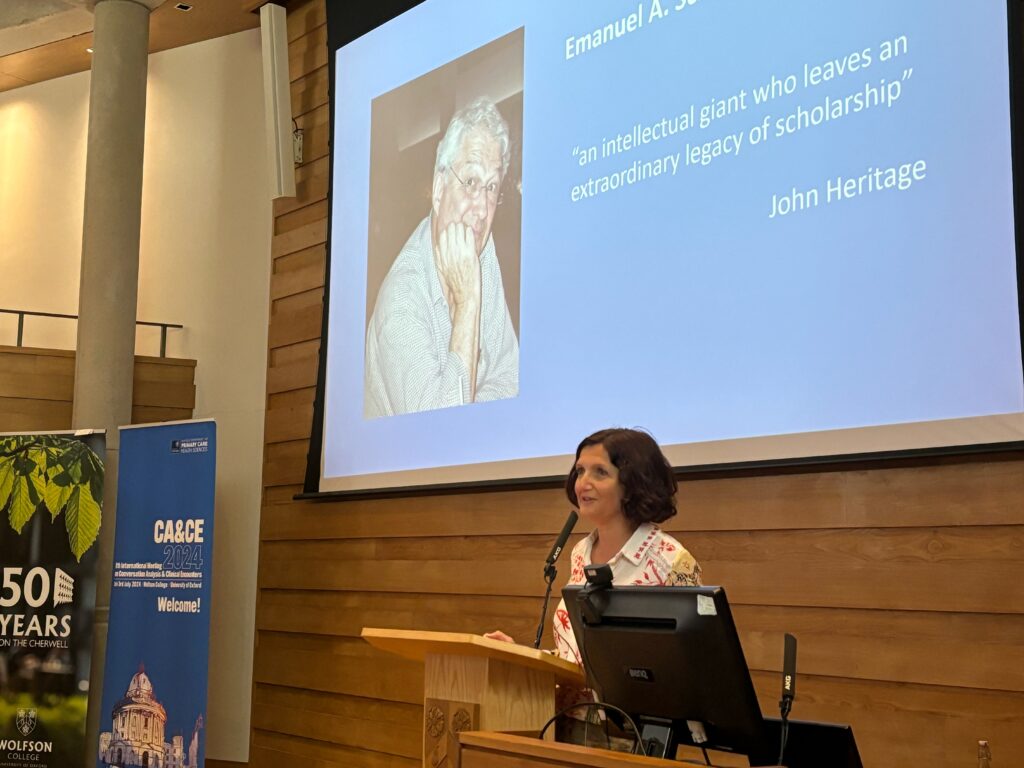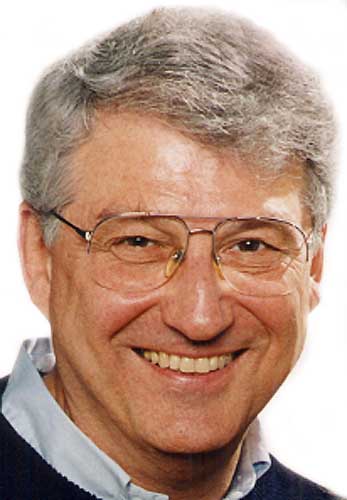Conversation Analysis and Clinical Encounters (CACE)
July 1-3, 2024, Wolfson College, Oxford
Christopher Koenig and Ana Cristina Ostermann
A special moment to celebrate Manny Schegloff’s life, to honor his legacy and role in the creation and establishment of conversation analysis, and his indelible influence on the field of talk-in-interaction. This is what happened at a panel organized by Christopher Koenig (San Francisco State University) and Rebecca Barnes (University of Oxford), the Chair for CACE 2024 meeting. CACE attendees were invited to the podium to spontaneously share their memories and pay tribute to Manny.
John Heritage (University of California, Los Angeles), a long-time UCLA colleague and friend of Manny’s, opened the stage with a video tribute. He reminded us that with Manny’s passing, all three founders of CA have now passed away. This is a very significant moment in the history of CA, not only because the founders are now gone, but also because their legacy of work and our memories of them and their work remain.
Galina Bolden (Rutgers University), the current president of ISCA and whose dissertation was supervised by Manny, recalled her experience as a graduate student at UCLA and having him as a teacher and mentor: an encouraging, demanding, inspiring, kind, generous, and true champion for his students. Galina reflected on how Manny taught students that CA is a serious discipline that requires daily practice and engagement with data, and how deeply committed he was to making CA accessible to anyone with a serious interest, no matter where they were in the world. Galina reminded us that Manny created an online publication archive (long before such things were common!), recorded his lectures, and made every effort to make them widely available. Both of these resources are now available on the ISCA website.

Tim Halkowski (University of Wisconsin, Stevens Point) reflected on his time as a graduate student in Santa Barbara under the mentorship of Don Zimmerman. He recounted how he delicately navigated his way through his advisor to get permission to travel from Santa Barbara to Los Angeles to attend Manny’s Conversational Structures class. He nervously approached Don, who paused for a long moment after the request and then encouraged Tim to attend with his blessing, saying that studying with Manny was “an important opportunity to study fundamental aspects of CA. The drive from Santa Barbara to LA is not short – probably an hour and a half each way. For the better part of an academic year, Tim was enriched not only by the class, but by Manny’s support throughout that time, providing Tim with an experience that was a crucial part of his education as a CA scholar.
Anna Lindstrom (Uppsala University) recounted her experience of writing a master’s thesis on openings in Swedish telephone conversation with Manny as main supervisor. As part of this project Anna had to summarize previous research and most importantly Manny’s pioneering work. This was a difficult task and she asked Manny how a novice scholar with non-native command of English would ever be able to summarize the research that he had so masterfully rendered. His advice was that the point was not to write a summary that purports to capture the intention of the original author but to articulate your own understanding of previous research and how it shapes your own analytic endeavour. He also emphasized that he is always interested in learning how others have understood his work. Anna noted that this anecdote highlights a key tenet of CA namely next turn proof procedure.
To close the session, Christopher Koenig recounted his own history in and with CA and shared a very special moment with Manny. He was a student of Robert Hopper, who died while Chris was writing his MA thesis. Wanting to continue his work in CA, Chris sought out the UCLA scholars John Heritage, Manny Schegloff, and Chuck Goodwin, who were his mentoring team. When Chris arrived at UCLA, he remembered walking into Manny’s long office in Haines Hall. As Chris walked toward him, someone he had never met in person, Manny got up from behind his desk, and when Chris was within a foot of him, before he said a word, Manny reached out to give Chris a big, supportive hug. Chris recalls that he felt this hug acknowledged the pain of watching a mentor die and affirmed his unconditional support for him as a student and as a person.

“A twinkly-eyed Manny, looking out at us, and encouraging us to move ahead”
